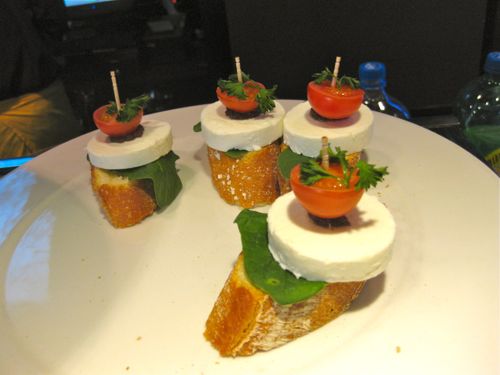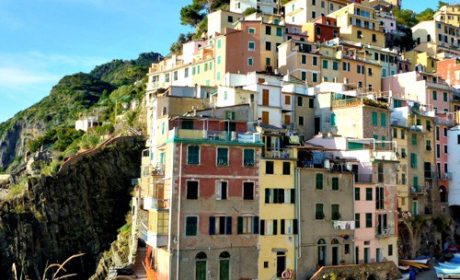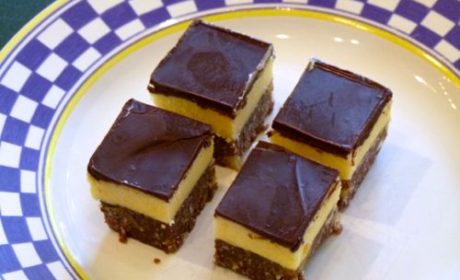Alan and I are boomers who like nothing better than to dine with the locals, like we did on our road trip through Northern Italy. To us, it’s an excellent way of experiencing another culture. Today, Nicole Jewell, an ex-pat living in Madrid, who blogs at Pass the Ham?, shares her suggestions for Madrid dining like a local.
Someone once told me that there are more than 400,000 bars and restaurants in Madrid. I don’t know if this number is accurate, but after living here for six years, I can tell you that this city is packed with great restaurants offering a range of choices from Spanish traditional fare to avant garde gastronomy.
But, as they say, Madrid dining is different, so there are a few tricks of the Spanish trade to help hungry boomer travelers wanting to dine like the locals. In the process, you’ll discover the culinary wonders of this Spanish city.

Breakfast of Champions
A practical way to start your traveling day is with a good healthy breakfast, right? Wrong. If you’re thinking something healthy—like granola and fruit—forget it. Spaniards are all about the bollos, or pastries. And if you’re really feeling daring, go for the full-force Spanish mother of all breakfasts—churros and chocolate. That’s right, fried dough served with a cup of steaming, thick hot chocolate, prefect for dipping.
If that sounds too heavy too early in the day, a pan con tomate will also do the trick—warm toasted bread with a touch of garlic and fresh tomato spread.
Also, good coffee is deeply rooted in the Madrileño culture. It’s the fuel of this chaotic town and you shouldn’t miss out on it. For a little pick-me-up, day or night, order a café con leche (coffee with milk), un cortado (an espresso shot with a bit of milk), or for those who need to actually sleep, un cafe descafeinado (decaffeinated coffee). Decaffeinated drinkers might be asked if they want coffee in a sobre (a small packet of instant coffee) or de maquina, which will come from the espresso machine. I’d go for la maquina if I were you—it’s fresher.
Over at the Viatrix, where ex-pat Melanie writes about life in Madrid and beyond, you’ll find her recommendations for where to find the best Churros and Chocolate in Madrid.
Baby boomer travel tip: You’ll probably pass quite a few pastry shops that offer Churros and Chocolate, but beware of places that don’t smell like pure grease as soon as you open the door. This means the churros are not made fresh in-house and will most likely be stale. Qué horror!!

Lunch Fit for a King
Lunchtime in Madrid is a full blown event. While most restaurants do offer lighter, faster fare, Madrileño tradition dictates that, if done right, you will be eating for about 2 good hours.
The most common midday fare at most restaurants is their menu del día, or menu of the day, consisting of a drink, starter, a main course and desert or coffee. A normal lunch routine would be to meet for a beer and light pincho first, then sit down for a feast around 2 o’clock. If you order the menu, expect to pay between 12-30€ ($15 to $38) depending on the type of restaurant.
Remember, lunch service usually kicks off around 2pm—anything earlier will be considered a light aperitivo.
A good lunch could consist of many typical Spanish dishes. Here are a few of my personal favorites:
- Jamon Iberico stands up to its reputation as being some of the best quality ham in the world
- Huevos rotos or patatas con huevos is a plate with french fries topped with fried eggs and the aforementioned ham or sometimes, Chorizo.
- Cocido is the hungry-man’s lunch so prepare to roll out of the restaurant and into your bed. Cocido Madrileño is a stew of garbanzo beans, meat and vegetables. Sounds innocent, but it really packs a punch!
Almendros ($) and Casa Lucio ($$$) are two restaurants that are well-known for their huevos rotos.

Tapa Town
After a big lunch and the obligatory siesta, the proper way to see Madrid is to stroll along the streets and tapear. Stopping for a beer or a glass of vino tinto and a tapa allows Spaniards to enjoy various distinctive dishes without filling up too quickly. While you can find tapa restaurants all around the city, you might want to focus in a few older barrios like La Latina, Barrio de las Letras, or Malasaña. These are all popular neighborhoods and easily strollable.
If you prefer to have the full Spanish dining experience, remember that dinner in Spain starts late. Most dinner reservations will be between 9:00 and 11:00 and similar to lunch, it can last up to 2 hours.
So, pack your bags, get your passport ready and, most importantly, put on your comfortable pants (preferably the ones with the elastic waistband) because, along with the museums, markets, and culture, the food will leave you wanting more.
Keep in mind that the service in Spain is … well, different. Any mid-priced place will have servers who are usually not very attentive. It’s okay to be a little pushy here even if you don’t speak the language. Don’t be rude, but if you’re not a little aggressive, you’ll face the possibility of starving.
Ironically, those same inattentive waiters will almost automatically bring bread to the table. Be prepared to refuse it if you don’t want to pay for it. The prices vary, but expect to pay about 2€ ($2.50) for bread and/or a place setting (unless it’s included in your menu del día).
Unless you’re reserving a table at a sit down restaurant for a big meal, most tapas and light aperitivos are stand-up service at bars, stools and the occasional barrel. Be sure to reserve a sit down service if you need respite for that achy back.



